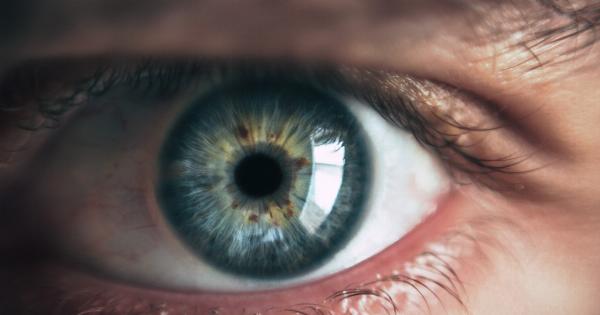Autoimmune diseases refer to a group of disorders where the immune system mistakenly attacks healthy cells in the body, causing inflammation and damage to various organs and tissues.
These conditions can affect people of all ages and ethnicities, and they often have complex and diverse symptoms. While autoimmune diseases typically cannot be cured, early detection and proper management can help individuals lead productive lives with minimal discomfort.
Common Visual Signs of Autoimmune Diseases
While autoimmune diseases can affect any part of the body, some conditions have visual signs that may serve as clues for diagnosis. Here are ten visual signs that may be related to an autoimmune disease:.
1. Rash or Skin Discoloration
Many autoimmune diseases can lead to skin problems. For example, certain forms of lupus can cause a butterfly-shaped rash on the face, known as a malar rash. Psoriasis, another autoimmune disease, causes red and scaly patches on the skin.
Vitiligo, an autoimmune condition that affects pigmentation, leads to the loss of skin color in patches. These skin symptoms often prompt individuals to seek medical advice.
2. Ulcers and Mouth Sores
Autoimmune diseases like lupus and Behcet’s disease can cause painful mouth sores or ulcers. These sores are often recurrent and can appear on the lips, inside the cheeks, or on the tongue.
The severity and frequency of these ulcers can vary depending on the specific condition.
3. Dry Eyes and Mouth
Sjogren’s syndrome is an autoimmune disease characterized by the inflammation of certain glands in the body, particularly those that produce tears and saliva.
As a result, individuals with Sjogren’s syndrome may experience dry eyes or a gritty sensation, along with dryness of the mouth and throat.
4. Swollen Joints
Joint inflammation, or arthritis, is a common symptom of many autoimmune diseases, such as rheumatoid arthritis (RA) and psoriatic arthritis. Swelling, redness, and pain in the joints are typical signs of autoimmune-related arthritis.
These symptoms often occur on both sides of the body and are usually more severe in the morning or after periods of inactivity.
5. Hair Loss
Alopecia areata is an autoimmune condition that results in patchy hair loss on the scalp, eyebrows, or other areas of the body. In some cases, the hair may grow back, but in others, the loss may be permanent.
Hair loss can also occur with other autoimmune diseases such as lupus.
6. Raynaud’s Phenomenon
Raynaud’s phenomenon is characterized by exaggerated responses to cold temperatures or emotional stress, which leads to narrowed blood vessels in the extremities, typically the fingers and toes.
This can cause color changes in the skin, turning them pale, blue, or even purple. The affected areas may also feel cold or numb.
7. Sun Sensitivity
Some individuals with autoimmune diseases, such as lupus, experience increased sensitivity to sunlight. Exposure to ultraviolet (UV) radiation can trigger or worsen symptoms, leading to a red rash or the development of skin lesions.
Those with sun sensitivity may need to take extra precautions, such as using sunscreen, wearing protective clothing, and avoiding peak sun hours.
8. Butterfly Rash on the Face
A butterfly rash is a characteristic visual sign of systemic lupus erythematosus (SLE). It appears as a red or flushed rash in the shape of a butterfly across the cheeks and bridge of the nose.
The severity of the rash can vary from mild to severe, and it may worsen with sun exposure.
9. Nail Abnormalities
Certain autoimmune diseases, such as psoriasis and systemic sclerosis, can affect the nails, causing changes in their appearance. These changes may include pitting, ridges, splitting, crumbling, or even nail loss.
Examining the nails can provide valuable insights into an individual’s overall health and the presence of an autoimmune condition.
10. Eye Inflammation
Eye inflammation or uveitis is a common manifestation of autoimmune diseases such as rheumatoid arthritis, ankylosing spondylitis, or inflammatory bowel disease. Symptoms include redness, pain, blurred vision, and sensitivity to light.
Prompt medical attention is necessary to prevent complications and preserve vision.
Conclusion
Autoimmune diseases can present a wide range of symptoms, including various visual signs. These signs can serve as indicators for healthcare professionals when diagnosing and managing autoimmune conditions.
However, it is essential to note that visual signs alone are not sufficient for a definitive diagnosis. If you suspect you may have an autoimmune disease, it is crucial to consult with a medical professional who can conduct thorough evaluations and recommend appropriate treatment options.





























